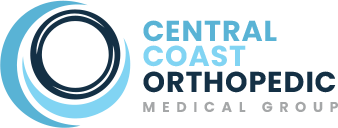
Overview
The muscles and joints of the shoulder make it the most mobile joint in the human body.
Biceps Tendon
The biceps tendon attaches the biceps muscle to the bone at the top of the shoulder socket. It sits in a groove at the front of the humerus.
Coracoacromial Ligament
The coracoacromial ligament is a bridge ligament attaching the acromion bone end to the coracoid process.
Bursa
Between the rotator cuff muscles and the larger surrounding muscles lies the bursa. This is pocket of lubricating fluid allow muscles to move freely over each other.
Rotator Cuff
The rotator cuff muscles and tendons raise and lower the arm from the side. The rotator cuff also helps stabilize the shoulder joint by holding the humeral head in the socket.
Labrum
The labrum, a ring of fibrous cartilage, surrounds the glenoid in the scapula. It helps attach the head of the humerus to the scapula.
Humerus
The humerus is also known as the upper arm bone.
Humerus Head
The head portion of the humerus bone is covered by smooth cartilage, which glides over the shoulder joint cavity.
Scapula
The scapula, or shoulder blade, is the large triangular bone located on the back side of the upper body.
Glenoid
This shallow cavity in the scapula is where the humerus head is inserted.
Acromion
The acromion projects forward from the top of the scapula to form the ìroofî of the shoulder.
Clavicle
The clavicle, also called the collarbone, attaches the shoulder to the rib cage and holds the shoulder out from the body.
Acromioclavicular Joint
The AC joint connects the acromion and clavicle bones. The ends of the bones are covered with cartilage, which allows smooth movement and protects the bones.
Coracoid Process
The coracoid process and the acromion form the ìroofî of the shoulder. The coracoid process, acromion and glenoid form the socket in which the humerus head is cradled.

